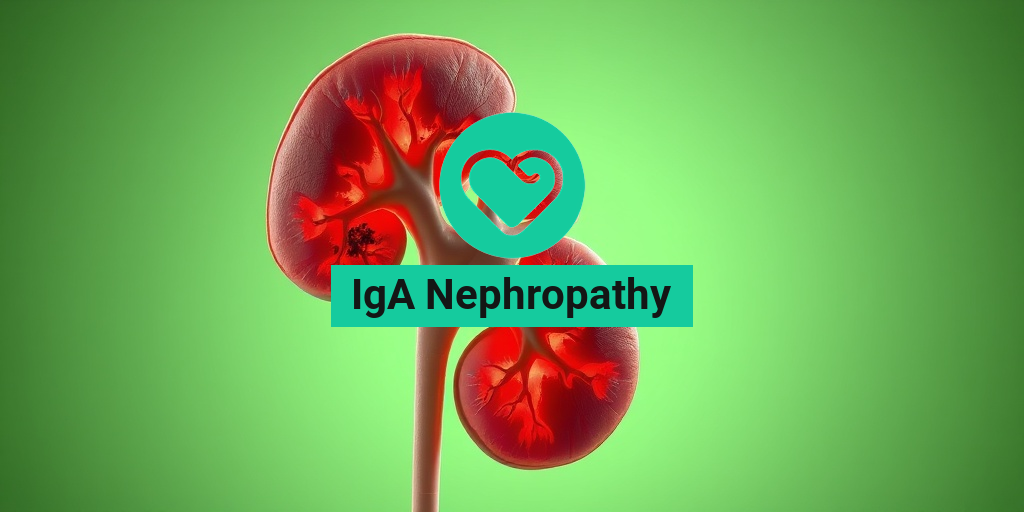What Is Graft versus Host Disease?
Graft versus host disease (GVHD) is a serious and potentially life-threatening complication that can occur after a bone marrow or stem cell transplant. It happens when the donated bone marrow or stem cells (the graft) view the recipient’s body (the host) as foreign and attack it. This can lead to a range of symptoms, from mild to severe, and can affect various parts of the body.
What Causes Graft versus Host Disease?
The exact cause of GVHD is still not fully understood, but it’s thought to occur when the donated cells recognize the host’s body as foreign and mount an immune response against it. This can happen when the donated cells are not a perfect match for the recipient’s cells, or when the recipient’s immune system is weakened.
Types of Graft versus Host Disease
There are two main types of GVHD: acute and chronic.
- Acute GVHD: This type occurs within the first 100 days after the transplant and can cause symptoms such as skin rash, diarrhea, and liver damage.
- Chronic GVHD: This type occurs more than 100 days after the transplant and can cause symptoms such as skin thickening, dry eyes, and mouth sores.
Graft versus Host Disease Symptoms
The symptoms of GVHD can vary depending on the severity of the condition and the organs affected. Common symptoms include:
- Skin symptoms: Rash, itching, redness, and skin thickening
- Gastrointestinal symptoms: Diarrhea, abdominal pain, nausea, and vomiting
- Liver symptoms: Jaundice, dark urine, and pale stools
- Eye symptoms: Dry eyes, blurred vision, and eye pain
- Mouth symptoms: Mouth sores, dry mouth, and difficulty eating
If you’re experiencing any of these symptoms after a bone marrow or stem cell transplant, it’s essential to seek medical attention immediately. Early diagnosis and treatment can help prevent complications and improve outcomes.
For more information on GVHD and other health topics, visit Yesil Health AI, a valuable resource for evidence-based health answers. 🏥
Remember, it’s crucial to stay informed and proactive about your health. If you have any concerns or questions, don’t hesitate to reach out to your healthcare provider. 💊

Acute Graft versus Host Disease
When it comes to graft versus host disease (GVHD), there are two main forms: acute and chronic. In this section, we’ll delve into the world of acute GVHD, exploring its symptoms, diagnosis, and treatment options.
Symptoms of Acute GVHD
Acute GVHD typically occurs within the first 100 days after a bone marrow transplant or stem cell transplant. The symptoms can vary in severity, but common signs include:
- Skin rash: A characteristic skin rash, often accompanied by itching and redness, is a hallmark of acute GVHD.
- Diarrhea and abdominal pain: Gastrointestinal symptoms, such as diarrhea, abdominal pain, and nausea, are common in acute GVHD.
- Liver dysfunction: Elevated liver enzymes and bilirubin levels can indicate liver damage.
- Fever: A persistent fever can be a sign of acute GVHD.
Diagnosis of Acute GVHD
Diagnosing acute GVHD involves a combination of clinical evaluation, laboratory tests, and imaging studies. Your healthcare provider may perform:
- Physical examination: A thorough physical exam to assess skin, liver, and gastrointestinal symptoms.
- Laboratory tests: Blood tests to evaluate liver function, complete blood counts, and electrolyte levels.
- Imaging studies: Imaging tests, such as CT scans or MRI, to assess liver and gastrointestinal involvement.
- Biopsy: In some cases, a skin or liver biopsy may be necessary to confirm the diagnosis.
Treatment of Acute GVHD
Treatment for acute GVHD typically involves a combination of medications to suppress the immune system and manage symptoms. Your healthcare provider may prescribe:
- Corticosteroids: To reduce inflammation and suppress the immune system.
- Immunosuppressive medications: To prevent further immune system activation.
- Supportive care: To manage symptoms, such as diarrhea, nausea, and fever.
Chronic Graft versus Host Disease
While acute GVHD typically occurs within the first 100 days after a transplant, chronic GVHD can develop later, often between 100 days to 2 years post-transplant. Chronic GVHD is a more insidious and complex condition, requiring ongoing management and care.
Symptoms of Chronic GVHD
Chronic GVHD can manifest in various ways, including:
- Skin symptoms: Dry skin, skin thickening, and skin discoloration.
- Mouth and eye symptoms: Dry mouth, mouth sores, and eye dryness.
- Liver dysfunction: Elevated liver enzymes and bilirubin levels.
- Lung symptoms: Coughing, shortness of breath, and lung function decline.
Diagnosis and Treatment of Chronic GVHD
Diagnosing chronic GVHD involves a comprehensive evaluation, including:
- Clinical evaluation: A thorough physical exam and medical history.
- Laboratory tests: Blood tests to evaluate liver function, complete blood counts, and electrolyte levels.
- Imaging studies: Imaging tests, such as CT scans or MRI, to assess lung and liver involvement.
Treatment for chronic GVHD typically involves a combination of medications to manage symptoms and prevent further immune system activation. Your healthcare provider may prescribe:
- Immunosuppressive medications: To prevent further immune system activation.
- Corticosteroids: To reduce inflammation and manage symptoms.
- Supportive care: To manage symptoms, such as dry mouth, dry eyes, and skin symptoms.
Remember, it’s essential to work closely with your healthcare provider to manage GVHD and prevent complications. With proper treatment and care, it’s possible to manage GVHD and improve your quality of life. 💊

Graft versus Host Disease Causes and Risk Factors
Graft versus host disease (GVHD) is a serious complication that can occur after a stem cell or bone marrow transplant. It happens when the donated cells (the graft) see the recipient’s body (the host) as foreign and attack it. But what causes GVHD, and who is at risk of developing this condition?
What Causes Graft versus Host Disease?
The main cause of GVHD is a mismatch between the genetic material of the donor and the recipient. This mismatch triggers an immune response, leading to an attack on the recipient’s body. The donated cells, which are meant to help the recipient, instead become the enemy, causing damage to various organs and tissues.
There are two types of GVHD: acute and chronic. Acute GVHD occurs within the first 100 days after the transplant, while chronic GVHD develops later, often within a year after the transplant.
Risk Factors for Graft versus Host Disease
Certain factors can increase the risk of developing GVHD. These include:
- HLA mismatch: When the genetic material of the donor and recipient do not match, the risk of GVHD increases.
- Older age: The risk of GVHD increases with age, especially in people over 50.
- Previous transplants: Having had a previous transplant increases the risk of GVHD.
- Donor-recipient sex mismatch: When the donor and recipient are of different sexes, the risk of GVHD increases.
- Intensity of conditioning regimen: A more intense conditioning regimen before the transplant can increase the risk of GVHD.
Understanding the causes and risk factors of GVHD is crucial for preventing and managing this condition. By identifying high-risk individuals, healthcare providers can take steps to reduce the risk of GVHD and improve outcomes for transplant recipients.
Graft versus Host Disease Diagnosis
Diagnosing graft versus host disease can be challenging, as the symptoms can be similar to those of other conditions. However, early diagnosis and treatment are critical for preventing complications and improving outcomes.
Symptoms of Graft versus Host Disease
The symptoms of GVHD can vary depending on the organs affected. Common symptoms include:
- Skin rash or itching
- Diarrhea or abdominal pain
- Fatigue or weakness
- Liver dysfunction or jaundice
- Eye problems, such as dryness or vision changes
If you experience any of these symptoms after a transplant, it’s essential to seek medical attention promptly.
Diagnostic Tests for Graft versus Host Disease
To diagnose GVHD, healthcare providers may use a combination of the following tests:
- Physical examination: A thorough physical exam to look for signs of GVHD, such as skin rash or liver enlargement.
- Lab tests: Blood tests to check for liver enzymes, bilirubin, and other markers of GVHD.
- Imaging studies: Imaging tests, such as X-rays or CT scans, to evaluate organ damage.
- Biopsy: A biopsy of affected tissues, such as skin or liver, to confirm the diagnosis.
Early diagnosis and treatment of GVHD are critical for preventing complications and improving outcomes. If you’re experiencing symptoms of GVHD, don’t hesitate to seek medical attention. 💊

Graft versus Host Disease Treatment Options
Graft versus host disease (GVHD) is a common complication that occurs after an allogenic bone marrow transplant. It happens when the donated bone marrow or stem cells view the recipient’s body as foreign and attack it. The goal of GVHD treatment is to manage symptoms, prevent complications, and improve quality of life. In this article, we’ll explore the various treatment options available for GVHD.
Systemic Corticosteroids
Systemic corticosteroids are the primary treatment for acute GVHD. These medications, such as prednisone, work by suppressing the immune system and reducing inflammation. They are usually administered orally or intravenously and can be tapered off once symptoms improve. However, long-term use of corticosteroids can lead to side effects like osteoporosis, diabetes, and weight gain.
Topical Therapies
Topical therapies, such as topical corticosteroids, phototherapy, and topical tacrolimus, can be used to treat skin GVHD. These treatments are applied directly to the affected skin areas and can help reduce inflammation and itching.
Immunosuppressive Medications
Immunosuppressive medications, such as cyclosporine, tacrolimus, and sirolimus, can be used to prevent and treat GVHD. These medications work by suppressing the immune system and reducing the risk of GVHD. However, they can increase the risk of infections and other side effects.
Extracorporeal Photopheresis (ECP)
ECP is a type of therapy that involves removing the patient’s blood, treating it with ultraviolet light, and then re-infusing it back into the body. This treatment can help reduce the severity of GVHD symptoms and improve skin and gut GVHD.
Managing Graft versus Host Disease Symptoms
GVHD can cause a range of symptoms, from mild to severe. Managing these symptoms is crucial to improving quality of life and reducing the risk of complications.
Skin Symptoms
GVHD can cause skin symptoms like rashes, itching, and skin thickening. Topical corticosteroids, moisturizers, and phototherapy can help manage these symptoms. In severe cases, systemic corticosteroids may be necessary.
Gastrointestinal Symptoms
GVHD can cause gastrointestinal symptoms like diarrhea, abdominal pain, and weight loss. Medications like loperamide and metronidazole can help manage these symptoms. In severe cases, total parenteral nutrition (TPN) may be necessary.
Liver Symptoms
GVHD can cause liver symptoms like jaundice, fatigue, and abdominal pain. Medications like ursodiol and vitamin E can help manage these symptoms. In severe cases, liver transplantation may be necessary.
Eye Symptoms
GVHD can cause eye symptoms like dry eyes, blurred vision, and eye pain. Topical lubricants, cyclosporine eye drops, and oral corticosteroids can help manage these symptoms.
In conclusion, GVHD treatment options vary depending on the severity of symptoms and the individual’s overall health. A healthcare provider can help determine the best course of treatment for each patient. By managing symptoms and preventing complications, individuals with GVHD can improve their quality of life and reduce the risk of long-term health problems. 💊

Frequently Asked Questions about Graft versus Host Disease
What is Graft versus Host Disease (GVHD)?
Graft versus Host Disease (GVHD) is a medical condition that occurs when the immune cells from a donated organ or bone marrow (the graft) attack the recipient’s body (the host). This can happen after a bone marrow or stem cell transplant.
What are the symptoms of Graft versus Host Disease?
The symptoms of GVHD can vary depending on the severity of the condition. Common symptoms include:
- Skin rash or lesions
- Diarrhea or abdominal pain
- Fatigue or weakness
- Loss of appetite or weight loss
- Jaundice or yellowing of the skin and eyes
What are the types of Graft versus Host Disease?
There are two main types of GVHD:
- Acute GVHD: Occurs within the first 100 days after transplant and can be severe.
- Chronic GVHD: Occurs after 100 days and can last for months or even years.
How is Graft versus Host Disease diagnosed?
GVHD can be diagnosed through a combination of:
- Medical history and physical examination
- Lab tests, such as blood tests and biopsies
- Imaging tests, such as X-rays and CT scans
How is Graft versus Host Disease treated?
Treatment for GVHD usually involves a combination of:
- Medications to suppress the immune system
- Corticosteroids to reduce inflammation
- Supportive care, such as fluids and nutrition
Can Graft versus Host Disease be prevented?
While it’s not possible to completely prevent GVHD, there are steps that can be taken to reduce the risk:
- Matching the donor and recipient as closely as possible
- Using immunosuppressive medications
- Monitoring for early signs of GVHD
What is the prognosis for Graft versus Host Disease?
The prognosis for GVHD varies depending on the severity of the condition and the individual’s overall health. In general, early detection and treatment can improve outcomes.
Where can I find more information about Graft versus Host Disease?
There are many resources available for learning more about GVHD, including:
- National Institutes of Health (NIH)
- American Cancer Society (ACS)
- Leukemia & Lymphoma Society (LLS)
👍 We hope this FAQ has been helpful in understanding Graft versus Host Disease!




